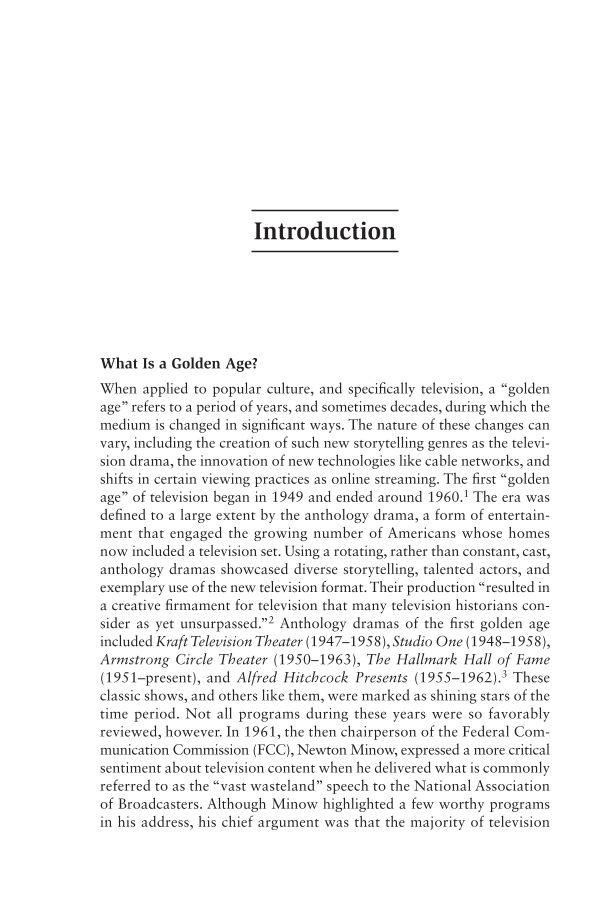Introduction What Is a Golden Age? When applied to popular culture, and specifically tele vi sion, a “golden age” refers to a period of years, and sometimes decades, during which the medium is changed in significant ways. The nature of these changes can vary, including the creation of such new storytelling genres as the televi sion drama, the innovation of new technologies like cable networks, and shifts in certain viewing practices as online streaming. The first “golden age” of tele vi sion began in 1949 and ended around 1960.1 The era was defined to a large extent by the anthology drama, a form of entertain- ment that engaged the growing number of Americans whose homes now included a tele vi sion set. Using a rotating, rather than constant, cast, anthology dramas showcased diverse storytelling, talented actors, and exemplary use of the new tele vi sion format. Their production “resulted in a creative firmament for television that many television historians con- sider as yet unsurpassed.”2 Anthology dramas of the first golden age included Kraft Tele vi sion Theater (1947–1958), Studio One (1948–1958), Armstrong Circle Theater (1950–1963), The Hallmark Hall of Fame (1951–present), and Alfred Hitchcock Presents (1955–1962).3 These classic shows, and others like them, were marked as shining stars of the time period. Not all programs during these years were so favorably reviewed, however. In 1961, the then chairperson of the Federal Com- munication Commission (FCC), Newton Minow, expressed a more critical sentiment about television content when he delivered what is commonly referred to as the “vast wasteland” speech to the National Association of Broadcasters. Although Minow highlighted a few worthy programs in his address, his chief argument was that the majority of television
Document Details My Account Print multiple pages
Print
You have printed 0 times in the last 24 hours.
Your print count will reset on at .
You may print 0 more time(s) before then.
You may print a maximum of 0 pages at a time.

















































































































































































































































